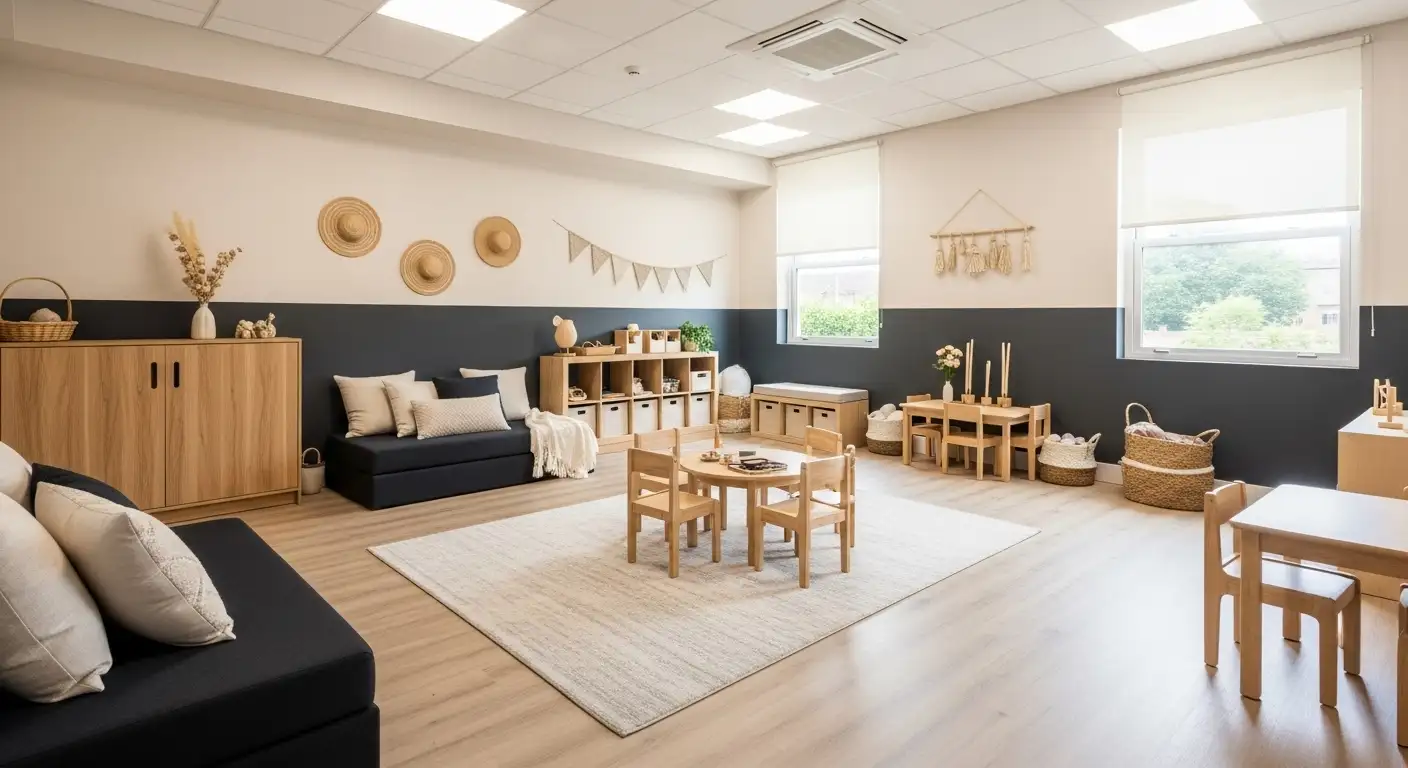How Speech Therapy Encourages Positive Communication


Unlocking the Power of Words Through Targeted Support
Speech therapy is a vital intervention that helps individuals of all ages enhance their communication skills, fostering confidence and social success. Whether addressing speech delays, language impairments, or social communication challenges, speech therapy employs personalized techniques designed to encourage positive interactions, emotional development, and independence. This article explores how speech therapy functions, the techniques it uses, and its profound impact on improving communication, emotional well-being, and social integration.
Understanding Speech Therapy and Its Scope

What is speech therapy?
Speech therapy is a treatment process conducted by speech-language pathologists designed to help individuals improve their communication, language, and speech abilities. It involves a variety of personalized exercises, activities, and techniques tailored to address specific challenges. These challenges may include articulation issues, fluency disorders such as stuttering, voice problems, or difficulties with understanding and expressing language.
This form of therapy benefits a wide range of individuals across different age groups. For young children, it often supports developmental delays in speech and language. For adults, it can aid recovery from strokes, traumatic brain injuries, or other neurological conditions. The core goal of speech therapy is to foster effective communication, increase confidence, and enhance overall quality of life.
Typical activities involved in speech therapy include speech exercises, language intervention strategies, practicing sounds and words, and teaching alternative communication methods when needed. These may involve using visual aids, picture boards, or communication devices to ensure the individual can express themselves more effectively. Overall, speech therapy is a highly adaptable and supportive approach to overcoming communication challenges.
How does speech therapy help with communication?
Speech therapy significantly improves communication skills by addressing various speech and language disorders. For individuals with speech sound difficulties, therapy focuses on articulating sounds correctly, strengthening oral muscles, and breathing techniques to produce clear, understandable speech.
For those facing fluency issues like stuttering, specific techniques such as controlled breathing, slowing speech, and relaxation exercises are employed. Language impairments caused by neurological injuries are targeted through language enrichment strategies, which involve expanding vocabulary, understanding grammar, and practicing meaningful conversational exchanges.
Moreover, speech therapy can introduce alternative or augmentative communication methods, such as sign language, picture exchange communication systems (PECS), or speech-generating devices, to support individuals who are non-verbal or have severe impairments. These tools help users become more independent in expressing their needs and emotions.
In a broader sense, speech therapy promotes the development of social communication skills, including turn-taking, active listening, and interpreting social cues. It is tailored to help each person communicate effectively in everyday situations, whether in personal relationships, educational settings, or the workplace. Consequently, improved communication enhances self-esteem, reduces anxiety, and enables more meaningful interactions, ultimately boosting overall quality of life.
Techniques and Strategies in Speech Therapy

What techniques are used in speech therapy?
Speech therapy involves a diverse set of techniques tailored to each individual's needs. Common methods include modeling correct speech, where therapists demonstrate proper pronunciation and sentence structures. Providing choices helps clients learn to make decisions and express preferences, boosting language use.
Narrating actions through parallel talk—where therapists describe what the child is doing—encourages language development and engagement. Visual aids, such as pictures or flashcards, support understanding and retention.
Sign language and singing are also valuable tools, especially for children with expressive difficulties or those who benefit from multisensory approaches.
Repetition and practice help solidify new skills, while positive reinforcement, like praise or small rewards, encourages continued effort. Therapists often simplify sentences and provide wait time to allow children to formulate responses.
Additional strategies include using auditory, visual, and tactile cues to correct speech sounds, which enhances articulation. Parental involvement is vital; practicing these techniques at home reinforces progress and creates a supportive environment.
By integrating these methods, speech therapists foster a fun, engaging, and effective learning experience for their clients.
How can positive reinforcement improve speech therapy outcomes?
Positive reinforcement plays a pivotal role in the success of speech therapy. When children receive immediate praise or rewards, they feel recognized and motivated to continue practicing their skills.
This approach boosts confidence and fosters a sense of accomplishment, encouraging children to persevere when faced with challenging tasks.
Effective reinforcement strategies include verbal praise, stickers, or engaging in preferred activities following successful use of language or articulation.
Consistent feedback helps children associate effort with positive results, facilitating the generalization of skills outside therapy sessions.
Creating an environment filled with encouragement and rewards builds children’s motivation, helping them see learning as a rewarding experience. Ultimately, reinforcement increases active participation and leads to better, more lasting improvements in communication abilities.
Techniques and Strategies Summary
| Technique/Strategy | Description | Additional Details |
|---|---|---|
| Articulation Therapy | Focuses on improving pronunciation and clarity. | Uses exercises to strengthen mouth muscles and breath control. |
| Language Intervention Methods | Enhances vocabulary, sentence structure, and comprehension. | Includes modeling, expansion, and visual supports. |
| Fluency Training Techniques | Aims to reduce stuttering and improve speech flow. | Employs controlled breathing, pausing, and relaxation. |
| Social Skills Training | Builds effective interpersonal communication. | Involves role-playing and peer interactions. |
| Use of AAC Devices | Supports individuals with limited or no speech. | Devices include picture systems and speech-generating apps. |
Effective speech therapy combines these strategies with the use of visual, auditory, and tactile feedback, creating comprehensive and personalized programs tailored for each individual's goals.
Creating a Positive Environment for Communication Growth

How do speech and language therapists promote positive outcomes?
Therapists develop personalized, assessment-based plans that focus on each individual's unique communication challenges. They use targeted exercises, social skills activities, and play-based techniques to improve speech clarity, language understanding, and pragmatic skills.
Throughout therapy, they work not only with children but also with adults facing communication difficulties, such as post-stroke aphasia or social interaction challenges. Collaboration with parents, caregivers, and other health professionals helps ensure a comprehensive approach.
Ongoing training for therapists keeps practices current, integrating the latest methods. By supporting confidence and independence, therapists help individuals lead richer social and personal lives.
How can positive reinforcement improve speech therapy outcomes?
Positive reinforcement plays a vital role in motivating individuals during therapy sessions. When children receive praise, stickers, or enjoy preferred activities for making progress, they tend to be more engaged and persistent.
This approach builds their confidence and encourages repeated use of new skills. Immediate and specific feedback helps solidify their learning, promoting the transfer of skills to everyday situations.
Creating a reward system not only makes sessions more enjoyable but also fosters a sense of achievement. As a result, children are more likely to continue practicing and mastering new communication abilities.
Role of caregivers and family involvement
Active participation of parents and caregivers is crucial. They can support therapy goals by practicing techniques at home, engaging in regular conversation, and creating opportunities for children to communicate.
Involvement ensures consistency, reinforces learning, and encourages children to use their skills in natural settings. Families receive guidance from therapists on effective strategies, making the therapy more effective and meaningful.
Importance of tailored goals and progress tracking
Setting personalized goals helps target specific communication challenges and keeps therapy focused. Regular progress monitoring allows therapists to adjust strategies, celebrate milestones, and motivate continued effort.
Tracking progress through assessments and feedback ensures therapy remains effective and aligned with the child's evolving needs.
Creating motivating and engaging therapy sessions
Using age-appropriate activities like games, stories, role-playing, and physical movements keeps children interested. Incorporating fun and interactive elements encourages participation.
Therapists aim to foster a supportive environment where children feel safe to experiment with language and express themselves freely. Consistent positive reinforcement and variety in activities help sustain motivation.
| Aspect | Approach | Benefit |
|---|---|---|
| Family Involvement | Practice techniques at home, conversational opportunities | Reinforces learned skills, builds confidence |
| Goal Setting and Tracking | Individualized goals, regular assessments | Ensures targeted progress, motivates continued effort |
| Engaging Therapy Methods | Games, storytelling, role-play, physical activities | Maintains interest, promotes natural language use |
| Reinforcement Strategies | Praise, rewards, positive feedback | Boosts motivation and self-esteem |
By fostering a nurturing environment with involved families, personalized objectives, and engaging activities, speech therapy can be a transformative process. It ultimately empowers individuals to communicate effectively, with confidence and joy within their daily lives.
The Transformative Power of Play and Storytelling

Why is storytelling important in speech therapy?
Storytelling holds a vital place in speech therapy because it supports multiple aspects of communication development. Through storytelling, children improve their language skills, strengthen cognitive abilities, and enhance social interaction.
Therapists often incorporate narrative interventions, visual aids, and interactive activities like role-playing and play-based learning to boost children’s storytelling skills. This process encourages children to organize their thoughts, express emotions, and practice new vocabulary within meaningful contexts.
Engaging in storytelling not only improves speech but also builds confidence. Creative techniques such as journaling and storytelling exercises foster emotional resilience and allow children to articulate feelings effectively. Modern tools, including digital storytelling software and interactive scenarios, further engage children, enabling them to transfer learned skills into everyday conversations and social situations.
What strategies support language development through storytelling?
To enhance language skills via storytelling, therapists employ a variety of engaging strategies:
- Interactive storytelling: Encouraging children to participate actively by asking questions and building stories collaboratively.
- Role-playing: Acting out stories to practice vocabulary, sentence structure, and social cues.
- Physical movements: Incorporating gestures and actions to make stories more memorable and understandable.
- Open-ended questions: Prompting children to think creatively and expand their responses.
These methods promote active engagement, making learning enjoyable and less intimidating. Visual supports and prompting questions are also vital, as they help children develop a richer vocabulary and better comprehension. Overall, these strategies create a supportive environment where children feel confident and motivated to communicate.
Technology and Innovative Approaches in Speech Therapy
How does technology enhance speech therapy?
Modern speech therapy integrates various digital tools to improve outcomes for children and adults alike. Digital storytelling applications and narrative assessment software are at the forefront of this technological advancement, offering personalized and engaging therapy sessions. These tools assess language skills, identify specific challenges, and provide customized activities that motivate learners.
Multimedia learning, which includes videos, interactive apps, and online platforms, makes speech therapy more accessible and stimulating. Children can practice speech and language skills at their own pace, with instant feedback helping to correct errors and reinforce positive progress. Such approaches foster a more dynamic learning environment, encouraging continued participation and engagement.
Moreover, technology supports remote therapy, connecting individuals in different locations with qualified therapists. This flexibility ensures that more people can access the benefits of tailored speech therapy, regardless of geographic barriers.
What innovative methods are used in modern speech therapy?
Recent advancements have led to the widespread adoption of innovative methods such as digital storytelling and narrative assessment software. These tools allow therapists to create immersive and engaging learning scenarios that are tailored to each child's needs.
Interactive applications, virtual reality encounters, and online platforms are utilized to tailor interventions and provide real-time progress tracking. These technologies make therapy sessions more interactive, fun, and effective.
The integration of multimedia tools broadens access, enabling remote sessions that include parental participation and feedback. This approach not only boosts engagement but also facilitates continuous practice outside of formal sessions.
By harnessing digital innovations, modern speech therapy opens new pathways for effective, adaptable, and motivational treatment, helping individuals develop essential communication skills more efficiently.
Fostering a Future of Confident Communicators
Speech therapy is a powerful catalyst for positive communication, empowering individuals to express themselves effectively, build stronger relationships, and achieve personal and professional success. Through a combination of tailored techniques, engaging activities, and supportive environments, speech-language pathologists help break down communication barriers at any age. The emphasis on positive reinforcement, family involvement, and innovative tools ensures that therapy results are meaningful and lasting. When communication improves, so does self-confidence, emotional well-being, and social inclusion, ultimately enriching lives and strengthening communities.
References
- How Speech Therapy Improves Communication Skills
- Speech Therapy: What It Is & How It Works
- Speech Therapy Strategies to Help Improve Communication
- Activities to Encourage Speech and Language Development - ASHA
- Bridging Words and Emotions: How Speech Therapy Fuels Social ...
- Speech Therapy: Communication Builds Confidence
- The Power of Positive Reinforcement in Speech Therapy
- 5 Benefits of Speech Therapy - Lane Regional Medical Center
Recent articles

Benefits of Drama Therapy for Autism
Unveiling the Transformative Power of Drama Therapy for Children with Autism

Supporting Autism in Mainstream Classrooms
Integrating Autism Support in Inclusive Educational Settings

Sulforaphane Treatment of Autism
Unlocking New Pathways: Exploring Sulforaphane as a Promising Autism Therapy

How Physical Therapy Helps Children Build Core Strength
Building Strength and Confidence: The Role of Physical Therapy in Child Development

How Behavior Analysis Encourages Structured and Unstructured Play
Unlocking Play: The Role of ABA in Structured and Unstructured Learning

How ABA Therapy Supports Children with Anxiety
Unlocking Calm: The Role of ABA Therapy in Managing Childhood Anxiety


